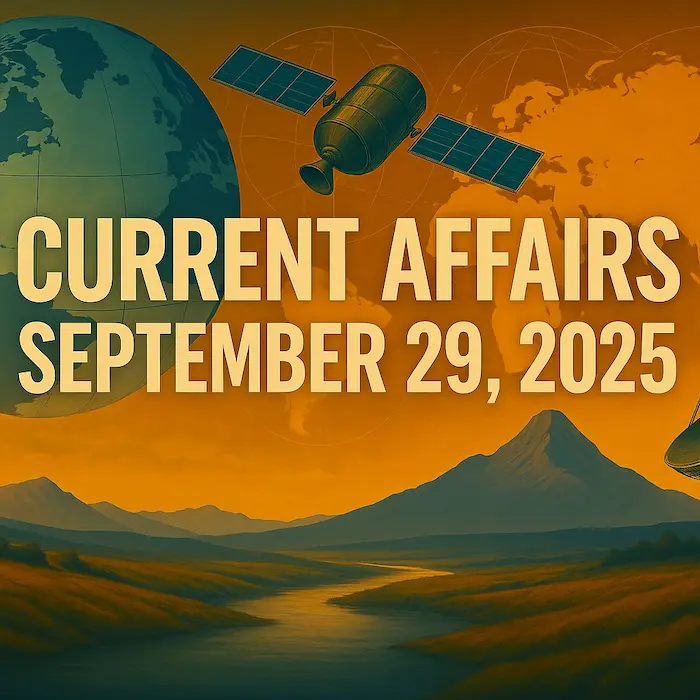1. Cold Desert Biosphere Reserve – UNESCO World Network Recognition – Environment
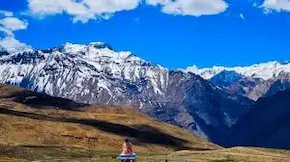
Why in News?
The Cold Desert Biosphere Reserve in Lahaul–Spiti district, Himachal Pradesh, has been included in UNESCO’s World Network of Biosphere Reserves (WNBR). This makes it India’s 13th biosphere reserve to receive global recognition for its ecological richness and sustainable traditional practices.
About the Cold Desert Biosphere Reserve
Geographical Location
- Situated in Himachal Pradesh’s Lahaul-Spiti district
- Covers approximately 7,770 sq. km
- Altitude Range: 3,300 – 6,600 meters
- Landscape includes:
- Glacial valleys
- Windswept plateaus
- Alpine lakes
- High-altitude cold deserts
Ecological & Cultural Significance
Biodiversity
- 732 vascular plant species
- 30 endemic species
- 47 medicinal herbs, used in Tibetan traditional healing
- Fauna:
- Snow Leopard
- Himalayan Ibex
- Golden Eagle
- Other Trans-Himalayan fauna
Human Habitation
- Population: ~12,000 residents
- Livelihood:
- Traditional pastoralism
- Yak and sheep herding
- Small-scale farming
- Unique culture shaped by Tibetan Buddhism and local monasteries
- Rich in indigenous medicinal knowledge and eco-spiritual practices
Importance of UNESCO Recognition
Global Significance
- Brings international attention to the fragile Trans-Himalayan ecosystem
- Acknowledges the integration of traditional knowledge with ecological conservation
- Encourages:
- Eco-tourism
- Climate research
- Community-based sustainable development
National Relevance
- Becomes India’s 13th entry in UNESCO’s World Network of Biosphere Reserves
- Aligns with India’s climate and biodiversity goals under:
- Convention on Biological Diversity (CBD)
- Paris Climate Agreement
State Relevance (Himachal Pradesh)
- Boosts eco-tourism potential in Lahaul-Spiti
- Encourages preservation of indigenous culture and biodiversity
- Opportunities for sustainable development and climate adaptation in cold desert zones
Exam Connect – Possible Questions
Prelims
1. The Cold Desert Biosphere Reserve, recently added to UNESCO’s World Network, is located in:
A. Uttarakhand
B. Himachal Pradesh
C. Sikkim
D. Ladakh
Answer: B. Himachal Pradesh
2. Which of the following species is commonly found in the Cold Desert Biosphere Reserve?
A. One-horned Rhinoceros
B. Olive Ridley Turtle
C. Snow Leopard
D Nilgiri Tahr
Answer: C. Snow Leopard
Mains
1. The inclusion of the Cold Desert Biosphere Reserve in UNESCO’s World Network reflects a global acknowledgment of India’s ecological diversity. Discuss the ecological and cultural importance of this reserve, especially in the context of Himachal Pradesh. (150 words)
2. How can international recognitions like UNESCO’s World Biosphere Reserve status be leveraged to promote eco-tourism, climate resilience, and community development in fragile ecosystems like the Trans-Himalayas? (250 words)
2. Driving Digital Transformation in Gram Panchayats – Governance
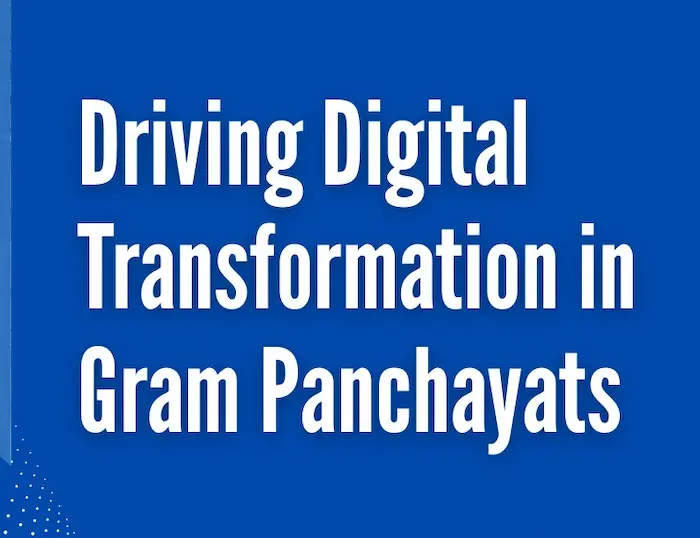
Why in News?
The Ministry of Panchayati Raj (MoPR) has recently launched several digital initiatives aimed at modernizing Gram Panchayat governance. These reforms are aligned with Digital India and Atmanirbhar Bharat, focusing on transparency, efficiency, and inclusive development at the grassroots level.
Key Digital Initiatives for Gram Panchayats
| Initiative | Purpose/Functionality |
|---|---|
| SabhaSaar | AI tool to auto-generate structured minutes of Gram Sabha meetings in 14 Indian languages |
| SVAMITVA Scheme | Provides legal ownership papers to rural households → enables access to loans & land monetization |
| BharatNet | Delivers high-speed broadband to rural areas, enabling FTTH and digital service access |
| eGramSwaraj | Integrated platform for planning, budgeting, accounting, and monitoring across 2.7 lakh Panchayats |
| Meri Panchayat App | Enhances transparency and citizen engagement by providing real-time Panchayat updates |
| Panchayat NIRNAY | Automates meeting schedules and decisions, reducing paperwork |
| Gram Manchitra | GIS-based visual tool for mapping assets and aligning them with Gram Panchayat Development Plans (GPDPs) |
Impact on Panchayat Functioning
Governance Clarity & Transparency
- Citizens can view real-time data on projects, finances, and meeting summaries
- Reduces scope for corruption and builds public trust
Improved Administrative Efficiency
- Automation reduces manual work, allowing officials to focus on project execution
- Unified digital systems streamline fund allocation and plan implementation
Inclusivity and Accessibility
- Multilingual tools ensure wider participation
- Integration of traditional knowledge systems with digital mapping (e.g., in GPDP)
Data-Driven Planning
- GIS-based Gram Manchitra enables better decision-making by visualizing village assets and gaps
Key Challenges in Implementation
| Challenge | Impact |
|---|---|
| Infrastructure Deficit | Remote Panchayats lack reliable internet, power, and digital hardware |
| Digital Literacy Gap | Many local representatives and citizens lack basic digital skills |
| Cultural & Linguistic Barriers | Lack of dialect support and resistance to change affect adoption |
| Data Accuracy Issues | Tools like Gram Manchitra depend on real-time, verified data |
| Gender Digital Divide | Women often lack device access and digital literacy, limiting participation |
Suggestions for Improvement
- Reliable Digital Infrastructure
- Expand BharatNet with Wi-Fi hotspots and provide devices to Panchayats
- Capacity Building & Training
- Train local youth as digital support staff
- Develop vernacular-language training modules
- Integrated and User-Friendly Platforms
- Combine services in a single app/portal
- Ensure offline functionality for areas with poor connectivity
- Focus on Women & Marginalized Groups
- Establish Digital Literacy Centres for rural women
- Promote digital inclusion in SHGs and local governance
- Monitoring and Feedback Mechanisms
- Use dashboards and helplines to track performance
- Periodic user feedback to improve service delivery
Exam Connect – Possible Questions
Prelims
1. Which of the following initiatives is an AI-based tool developed to record structured minutes of Gram Sabha meetings?
A. SVAMITVA
B. SabhaSaar
C. eGramSwaraj
D. Gram Manchitra
Answer: B. SabhaSaar
2. What is the primary purpose of the SVAMITVA scheme?
A. Rural Skill Development
B. Digitization of Panchayat meetings
C. Providing land ownership documents
D. Building smart classrooms in villages
Answer: C. Providing land ownership documents
Mains
1. Digital governance initiatives in rural areas are reshaping the Panchayati Raj system. Discuss the impact of recent digital tools launched by the Ministry of Panchayati Raj in strengthening local governance. (150 words)
2. Despite multiple initiatives, digital transformation in Gram Panchayats faces infrastructural, social, and cultural barriers. Examine these challenges and suggest a roadmap to bridge the rural-urban digital divide. (250 words)
3. India’s Universal Immunization Programme (UIP) and Digital Vaccination Reforms – Governance

Why in News?
India’s Universal Immunization Programme (UIP), the largest public vaccination programme in the world, is seeing intensified efforts through digital platforms like U-WIN, while also grappling with challenges such as vaccine hesitancy, low awareness, and remote access barriers.
Overview of Immunization in India
Universal Immunization Programme (UIP)
- Launched in 1985 (evolved from the Expanded Programme on Immunization, 1978)
- Administered by the Ministry of Health and Family Welfare
- Targets:
- ~2.6 crore infants
- ~2.9 crore pregnant women annually
- Offers free immunisation against 12 diseases
| Diseases Covered Nationally | Sub-national Vaccines |
|---|---|
| Diphtheria, Pertussis, Tetanus, Polio, Measles, Rubella, Childhood TB, Hepatitis B, Meningitis/Pneumonia (Hib) | Rotavirus, Pneumococcal Pneumonia, Japanese Encephalitis |
Mission Indradhanush (2014)
- Special drive to immunize unvaccinated/partially vaccinated children
- Intensified Mission Indradhanush (IMI) launched in 2017
- IMI 5.0 (2023) focuses on children up to 5 years and pregnant women
Full Immunization Coverage
- India achieved ~98% coverage in FY 2024–25, a remarkable milestone
Major Achievements
- Polio-Free Status: Certified in 2014
- Maternal & Neonatal Tetanus Elimination (MNTE): Validated in April 2015
- Yaws-Free Certification: First country globally to achieve this status
Digital Initiatives in Immunization
U-WIN Platform
- Based on Co-WIN success model
- Tracks end-to-end vaccination data for children & pregnant women
- Supports migratory populations with digital registration and reminders
eVIN (Electronic Vaccine Intelligence Network)
- Real-time system to manage vaccine logistics and cold chain
- Part of PM-Ayushman Bharat Health Infrastructure Mission
Challenges in Achieving Universal Immunization
| Issue | Details |
|---|---|
| Remote Access | Tribal and isolated communities have weak infrastructure (e.g., parts of Bihar, Northeast, UP) |
| Vaccine Hesitancy | Misinformation, religious and cultural beliefs hinder acceptance |
| Pandemic Disruption | COVID-19 led to temporary setbacks in routine immunization, e.g., measles outbreaks |
| Low Awareness | Urban slums and marginalised communities lack knowledge and access |
| Gender Digital Divide | Women’s access to mobile phones, digital services remains limited in many regions |
Suggested Measures for Improvement
| Area | Proposed Solutions |
|---|---|
| Campaign Strengthening | Replicate Pulse Polio-style National Immunization Days (NIDs) |
| Outreach Expansion | Conduct supplementary drives in low-coverage areas |
| Awareness | Boost IEC (Information, Education, Communication) campaigns; engage media |
| Institutional Coordination | Strengthen STFI, DTFI, BTFI for localized planning and implementation |
| Digital Tracking | Promote U-WIN platform; integrate with health records |
| Inclusive VHNDs | Enhance Village Health & Nutrition Days for rural outreach |
| Gender-Sensitive Approach | Promote women’s participation and digital literacy via SHGs, ASHAs, Anganwadis |
Exam Connect – Possible Questions
Prelims
1. Which of the following is NOT covered under India’s Universal Immunization Programme (UIP) at the national level?
A. Diphtheria
B. Hepatitis B
C. Rotavirus
D. Polio
Answer: C. Rotavirus
2. What is the U-WIN platform launched by the Government of India used for?
A. Online training for vaccinators
B. Digital tracking of vaccination for women and children
C. Monitoring pharmaceutical prices
D. Scheduling COVID-19 RT-PCR tests
Answer: B. Digital tracking of vaccination for women and children
Mains
1. India’s Universal Immunization Programme (UIP) has evolved into one of the most extensive public health programmes globally. Discuss its key components, achievements, and challenges. (150 words)
2. Despite high overall vaccination coverage, pockets of under-immunized populations remain in India. Analyze the causes and suggest strategies for strengthening last-mile vaccine delivery using digital tools. (250 words)
4. Insolvency and Bankruptcy Code (IBC) – Supreme Court Ruling on JSW Steel & BPSL – Economy

Why in News?
The Supreme Court of India has approved JSW Steel’s ₹19,350 crore acquisition of Bhushan Power and Steel Ltd. (BPSL), under the Insolvency and Bankruptcy Code (IBC), 2016. This ruling reversed a previous order favoring liquidation and reinforced the IBC’s objective of corporate revival over asset dissolution.
Key Takeaways from the Supreme Court Judgment
- Corporate Revival Preferred: The SC emphasized that reviving distressed companies via resolution is more desirable than liquidation.
- Investor Confidence Boosted: The decision strengthens legal clarity and encourages investment in insolvent companies.
- Supports IBC Objectives: Reinforces the code’s core principles—time-bound, market-driven, and creditor-in-control resolution process.
Understanding the IBC, 2016
Objective:
To consolidate and streamline the insolvency process for corporates, LLPs, partnership firms, and individuals.
Key Features:
- Time-bound resolution: 330 days (including litigation) to resolve cases
- Insolvency Resolution Process (CIRP) initiated by creditors or debtors
- NCLT (National Company Law Tribunal) adjudicates corporate insolvency cases
- Resolution professional (RP) manages debtor’s affairs during CIRP
Insolvency vs. Bankruptcy: Know the Difference
| Term | Meaning |
|---|---|
| Insolvency | Financial state of being unable to repay debts |
| Bankruptcy | Legal declaration of insolvency by a court |
About JSW–BPSL Case
- JSW Steel: Offered ₹19,350 crore to acquire BPSL under IBC resolution
- BPSL: Was among India’s largest defaulters, with ₹47,000+ crore in debt
- Previous NCLAT Order: Had favored liquidation due to pending criminal investigations
- SC Verdict: Set aside liquidation, ruled in favor of revival and business continuity
Institutional Framework
Insolvency and Bankruptcy Board of India (IBBI)
- Established: October 1, 2016
- Regulates: Insolvency professionals, agencies, and valuation entities
- Oversees implementation of the IBC
Economic Significance
- Faster Resolution = Healthier credit market
- Improved ease of doing business: IBC has been a factor in India’s ranking improvement
- Lower NPAs: Resolution of large defaulting companies through IBC reduces burden on banks
- Investor Protection: Ensures transparent and fair procedures for all stakeholders
Exam Connect – Possible Questions
Prelims
1. The Insolvency and Bankruptcy Code (IBC), 2016 is administered by which of the following bodies?
A. Reserve Bank of India
B. Securities and Exchange Board of India
C. Insolvency and Bankruptcy Board of India
D. Ministry of Finance
Answer: C. Insolvency and Bankruptcy Board of India
2. What is the maximum time limit for resolving a corporate insolvency case under the IBC, 2016 (including extensions)?
A. 90 days
B. 180 days
C. 270 days
D. 330 days
Answer: D. 330 days
Mains
1. The Insolvency and Bankruptcy Code (IBC) has emerged as a significant reform in India’s financial sector. Discuss the impact of recent judicial decisions, such as JSW Steel’s acquisition of BPSL, on the future of corporate insolvency resolution in India. (150 words)
2. While the Insolvency and Bankruptcy Code (IBC) aims to ensure faster recovery and corporate revival, several challenges remain in its implementation. Examine these challenges and suggest reforms for improving the effectiveness of the IBC. (250 words)
5. India Calls for United Nations Reforms Amid Global Instability – International Relations
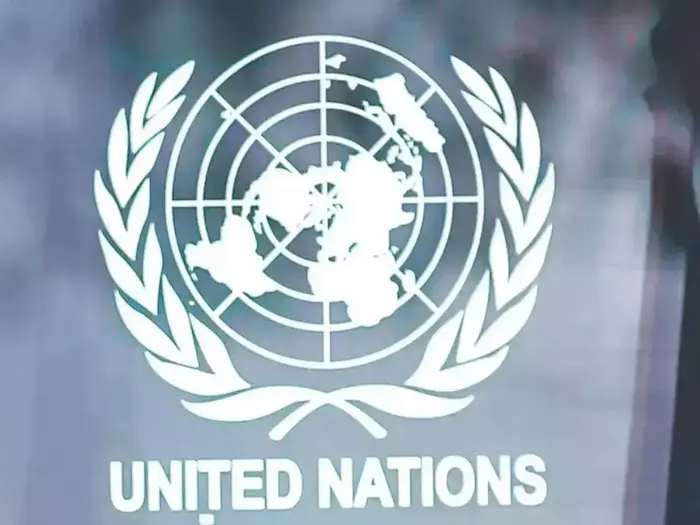
Why in News?
During the 80th session of the United Nations General Assembly (UNGA), External Affairs Minister Dr. S. Jaishankar reiterated India’s demand for urgent reforms in the United Nations system, particularly in the Security Council, to reflect contemporary geopolitical realities. He highlighted that the current UN structure fails to represent the Global South, despite their growing contributions and aspirations.
About the UN General Assembly (UNGA)
- UNGA is the main deliberative and policymaking body of the UN
- Composed of all 193 member states
- Meets annually in September for the General Debate, where countries present their views and priorities
- Theme for the 80th Session (2025):
“Better Together: 80 years and more for peace, development, and human rights”
India’s Key Concerns & Demands
Need for Institutional Reforms
- The UN Security Council (UNSC) remains dominated by the P-5 (China, France, Russia, UK, USA)
- It does not reflect the demographic, economic, or geopolitical realities of the 21st century
- India calls for expansion of permanent and non-permanent members to include countries like India, Brazil, South Africa, etc.
Representation of the Global South
- India emphasizes inclusive global governance
- As a leading voice of the Global South, India argues for equitable representation in institutions like the UN, IMF, and World Bank
Combating Terrorism
- India has consistently raised concerns about the UN’s inability to address cross-border terrorism effectively
- Urges a zero-tolerance approach to terrorism and the adoption of the Comprehensive Convention on International Terrorism (CCIT)
Reviving Multilateralism
- Dr. Jaishankar highlighted that multilateral institutions are losing credibility due to:
- Ineffectiveness in crisis response
- Slow decision-making
- Veto paralysis in UNSC
Contemporary Global Challenges Highlighted
| Issue | UN’s Weakness in Response |
|---|---|
| Conflicts & Wars | UN unable to resolve or prevent major conflicts (e.g., Ukraine, Middle East) |
| Climate Change | Lack of unified global action and funding for adaptation/mitigation |
| Terrorism | Inadequate framework to classify and act against state-sponsored terrorism |
| Economic Inequality | Limited role in addressing rising global economic disparities |
India’s Growing Global Role
- Largest democracy and one of the fastest-growing economies
- Major contributor to UN Peacekeeping Missions
- Member of key global platforms: G20, BRICS, QUAD, IBSA
- Advocates for “Vasudhaiva Kutumbakam” (The world is one family) in international forums
Exam Connect – Possible Questions
Prelims
1. Which of the following statements about the UN General Assembly (UNGA) is correct?
A. It consists only of the five permanent members of the Security Council
B. It holds legally binding powers over member states
C. It is the chief policymaking body of the UN with all 193 members
D. Its decisions are enforced by the International Court of Justice
Answer: C. It is the chief policymaking body of the UN with all 193 members
2. Which country has not been consistently part of the G4 nations advocating for UN Security Council reforms?
A. India
B. Brazil
C. Germany
D. Russia
Answer: D. Russia
Mains
1. India’s call for reforming the United Nations reflects a broader demand for inclusive global governance. Examine the need for UN reforms and India’s potential role in a restructured multilateral order. (150 words)
2. The credibility of multilateral institutions like the United Nations is being questioned amid growing global challenges. Discuss the structural and political barriers to UN reforms and how India, as part of the Global South, is shaping the debate. (250 words)
6. WTO Agreement on Fisheries Subsidies – India’s Ratification – Economy
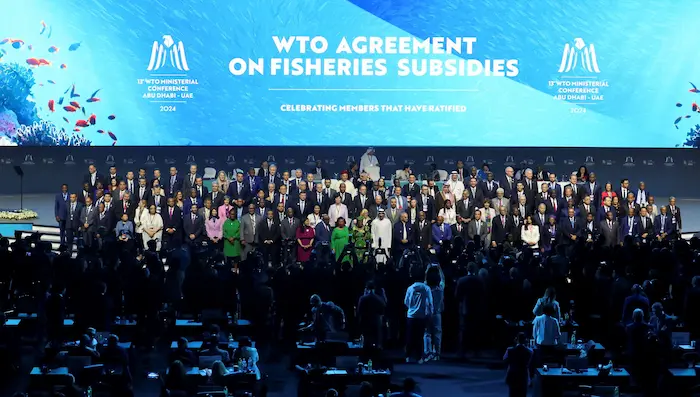
Why in News?
India has ratified the WTO Agreement on Fisheries Subsidies, reinforcing its commitment to:
- Sustainable fishing practices
- Marine biodiversity conservation
- Protecting small-scale fishers’ livelihoods
This move aligns India with global efforts to address overfishing and unregulated subsidies, while advocating for a fair and inclusive global trade framework.
What is the WTO Agreement on Fisheries Subsidies?
- A binding multilateral treaty adopted at the 12th WTO Ministerial Conference (2022)
- Aims to eliminate harmful fisheries subsidies that contribute to overfishing, overcapacity, and illegal fishing
- Part of broader Sustainable Development Goal (SDG) 14.6, which targets ending subsidies contributing to IUU fishing by 2020 (goal still in progress)
Key Objectives
- Ban Harmful Subsidies
- Discourage overexploitation of marine resources
- Ensure Fair Competition
- Reduce subsidy distortion by developed nations
- Safeguard Livelihoods
- Protect the rights of small-scale fishers, especially in the Global South
Key Features of the Agreement
| Feature | Explanation |
|---|---|
| Subsidy Prohibitions | Bans subsidies for: Illegal, Unreported, Unregulated (IUU) fishing Overfished stocks High seas fishing without regulation |
| Transparency Mechanism | Requires member countries to notify subsidies and fishing activities to the WTO |
| Implementation Support | Establishes a WTO Fisheries Funding Mechanism to help developing countries and LDCs comply |
| Committee on Fisheries Subsidies | A platform for reviewing compliance, technical assistance, and policy discussions |
India’s Stance and Concerns
Protection of Small-Scale Fishers
- India demands Special and Differential Treatment (S&DT) for developing nations
- Proposed a 25-year transition period (vs 5–7 years by developed countries)
Per Capita Subsidy Approach
- India highlights disparities:
- Developed countries → ~$76,000 per fisher
- India → ~$35 per fisher
- Advocates a fisher-centric subsidy cap, not total national subsidy limit
Stricter Rules for Historical Polluters
- Developed countries with high historic subsidies should face stricter regulation
- Low-impact, low-subsidy countries like India must not be penalized
Focus on Sustainability, Not Penalty
- Sustainable fishing efforts should be supported, not restricted
- India emphasizes policy space for domestic reforms under its Blue Economy vision
India’s Initiatives for Sustainable Fisheries
| Scheme/Policy | Purpose |
|---|---|
| Blue Revolution (2015-16) | Boost fish production, promote aquaculture |
| Pradhan Mantri Matsya Sampada Yojana (PMMSY, 2020) | Double exports, create jobs, ensure sustainability |
| Fisheries & Aquaculture Infrastructure Development Fund (FIDF, 2018-19) | Develop cold chain, ports, inland fisheries |
| National Policy on Marine Fisheries (NPMF, 2017) | Long-term sustainability, marine ecosystem conservation |
| Marine Fishing Regulation Acts (MFRA) | Enacted by states like Kerala & Maharashtra for EEZ fishing control |
| ICAR-CIFE (Mumbai) | Capacity-building and research for sustainable fisheries |
Exam Connect – Possible Questions
Prelims
1. The WTO Agreement on Fisheries Subsidies prohibits which of the following?
1.Subsidies for fishing of overfished stocks
2.Subsidies for illegal, unreported, and unregulated (IUU) fishing
3.Subsidies for high seas fishing under regulated frameworks
Choose the correct option:
A. 1 and 2 only
B. 2 and 3 only\
C. 1, 2 and 3
D. 1 and 3 only
Answer: A. 1 and 2 only
2. Which of the following schemes aims at infrastructure development in India’s fisheries sector?
A. PM-KUSUM
B. Pradhan Mantri Matsya Sampada Yojana
C. FIDF
D. Both B and C
Answer: D. Both B and C
Mains
1. India’s ratification of the WTO Agreement on Fisheries Subsidies demonstrates its commitment to sustainable marine resource management. Discuss the key provisions of the agreement and India’s policy concerns. (150 words)
2. While the WTO aims to curb harmful fisheries subsidies globally, developing countries like India face challenges in balancing trade fairness with livelihood protection. Evaluate the implications of the agreement for India’s fisheries sector and suggest policy recommendations. (250 words)

